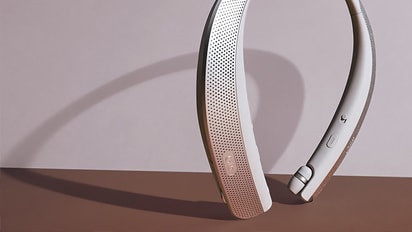At a Glance
Properly loading the dishwasher can help optimize cleaning performance.
LG Dishwashers - Proper Loading
For effective wash performance always load your dishwasher properly and make sure to do the following before loading your dishwasher.
Have adjustable tines folded up or down to fit various sized dishes, which can help configure the rack for your load type.
Starting with the lower rack, insert plates, soup bowls, and lids between the tines positioned upright. Fold down the tines to place larger dishes like pots and pans placed upside down and make sure that all items do not touch each other.
Load cookie sheets, cake pans, and other large items on the sides or back of the rack so they do not interfere with the rotation of the spray arms and do not prevent the detergent dispenser from opening.
The silverware basket is removable and by using the handle you can lift the basket to load your utensils into the separators to prevent nesting ensuring proper cleaning.
Remember to load sharp items, such as knives, pointing down.
Next is the upper rack. Use the upper rack for smaller delicate items. Small plates should be positioned upright and facing the center of the rack.
Cups, saucers, small bowls, and glasses must be positioned upside down in the rows between the rack tines to help avoid nesting.
Some models have stemware holders that provides support for long stem glasses, which can also be folded up to make way for taller glasses.
The upper rack is also adjustable with three available height positions to create more space. To lower the upper rack, hold the rack at the center of each side hand grip to support its weight, and then push the button on each side to release the rack and lower its position.
When raising the rack, lift until it locks into place in one of the upper positions. Be sure to empty the upper rack before raising or lowering the upper rack. Also make sure the bottom of the upper rack and the lower rack do not interfere with the rotation of the spray arms when loaded. Adjust the height when necessary.
The cutlery rack is suited for flatware. Most cooking or serving utensils, small prep bowls and lids.
The separators on the cutlery rack help keep flatware separated to avoid damage and improve cleaning.
The tray on the left side can be adjusted to a high or low position to accommodate utensils or cutlery of different sizes.
You can adjust a tray by sliding the lever. The entire cutlery rack can be removed if more space is needed for the upper rack.
Fully extend the rack and lift up from the front until the roller clears the rails. To reinstall, follow the same steps and reverse.
Try This
-
Adjust Rack Height
The heights and spaces of racks can be adjusted easily to accommodate large pots as well as small dishes.
1Upper Rack
The loading space can be adjusted by changing the height of the upper rack across 3 set positions.
This rack is suitable for washing concave bowls, small plates, cups, and glasses.How to move the rack
3 placement options for the rack
2Lower Rack
In the lower rack, the plate holder can be in a standing or reclined position.
It can accommodate a frying pan or a large pot.3Highest Rack
In the highest rack, the spoon holder can be adjusted to load ladles and other cooking tools.
Insert the handle of silverware into the hole.
If the handle is too thick, change the location. -
Loading Dishes
Note- Remove any chunks of food, such as bones and fruit seeds, before loading.
- Soak scorched pots, and stuck-on food, such as steamed eggs, for approximately an hour, and pre-wash before loading.
- Pre-wash dishes such as deep pots or wide frying pans and lay them down as much as possible for washing.
1Load plates in a standing position. In case of concave dishes, such as bowls, cups, and pots, have the concave parts facing downwards.
2Avoid loading dishes so that they are overlapping.
3Ensure dishes do not come in contact with the nozzles. Adjust the height of the racks when loading dishes, or reload dishes that nozzles may contact.
4Load the cutlery in a standing position as shown in the illustration.
Adjust the left and right sides of the upper rack in the same position. Otherwise, the door may not close.
Need to contact us?
If you have other questions or concerns, reach out to our 24/7 Chat Support for further assistance.














